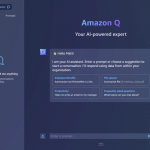A website is a powerful tool for any business or organization, as it can help attract, engage, and convert visitors into customers, clients, or supporters. However, a website can also cause problems if it is not well-designed, well-maintained, and well-optimized. Common website issues can affect the performance, usability, security, and ranking of a website, leading to negative impacts on the user experience, brand reputation, and business goals. In this article, we will explore some of the common website issues that many website owners face and how to avoid them or fix them.
Common Website Issues and How to Avoid Them
According to various sources, some of the common website issues that many website owners encounter are:
• Slow loading speed: A slow-loading website can frustrate visitors and make them leave before they see the content or take action. It can also affect the search engine ranking of a website, as speed is one of the factors that Google considers when ranking websites. To avoid or fix this issue, website owners should optimize their images, use caching plugins, enable compression, minify code, use a content delivery network (CDN), and choose a reliable web host.
• Broken links: Broken links are links that lead to non-existent or inaccessible pages or resources. They can create a bad impression on visitors and damage the credibility of a website. They can also affect the search engine ranking of a website, as broken links indicate poor quality and maintenance. To avoid or fix this issue, website owners should regularly check and update their links, use tools like Broken Link Checker or Screaming Frog to find and fix broken links, and create custom 404 error pages to redirect visitors to relevant pages.
• Poor navigation: Poor navigation is when a website does not have a clear and intuitive structure that guides visitors to find the information or action they are looking for. It can confuse visitors and make them lose interest or trust in a website. It can also affect the search engine ranking of a website, as poor navigation makes it harder for search engines to crawl and index a website. To avoid or fix this issue, website owners should organize their content into logical categories and subcategories, use descriptive and consistent labels for menus and buttons, provide breadcrumbs and sitemaps to show the hierarchy and location of pages, and use internal links to connect related pages.
• Unresponsive design: Unresponsive design is when a website does not adapt to different screen sizes and devices. It can create a poor user experience for visitors who use mobile phones or tablets to access a website. It can also affect the search engine ranking of a website, as Google favors mobile-friendly websites over non-mobile-friendly ones. To avoid or fix this issue, website owners should use responsive design techniques that make their website adjust to different screen widths and resolutions, use tools like Google’s Mobile-Friendly Test or Responsive Design Checker to test their website’s mobile-friendliness, and follow the best practices for mobile web design.
• Security breaches: Security breaches are when hackers or malicious actors gain unauthorized access to a website or its data. They can cause serious damage to a website and its users, such as stealing personal or financial information, injecting malware or ransomware, defacing or deleting content, redirecting traffic to other sites, etc. They can also affect the search engine ranking of a website, as Google may flag or blacklist a hacked site. To avoid or fix this issue, website owners should use strong passwords and encryption methods for their accounts and data, update their software and plugins regularly, use security plugins like Wordfence or Sucuri, install an SSL certificate to secure their site with HTTPS, and backup their site frequently.
Conclusion
These are some of the common website issues that many website owners face and how to avoid them or fix them. By following these tips and using these tools, website owners can improve their website’s performance, usability, security, and ranking, and provide a better user experience for their visitors. This can lead to more traffic, engagement, conversion, and loyalty for their business or organization.



